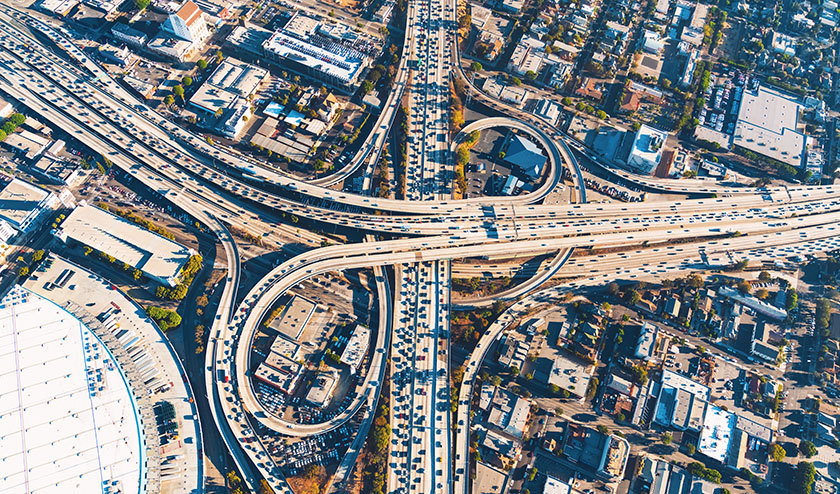How can predictive mobility data and audience targeting help retail brands draw in more customers?
Read article

The U.S. is in the throes of a driving safety crisis. Despite recent advancements in automotive technologies that should make roads safer, traffic deaths have risen by 30% over the past decade.
In our recent data report, we uncovered some of the factors behind this terrifying trend. For example, both speeding and distracted driving have become more common since the onset of the COVID-19 pandemic. However, what’s less clear is how we can counteract these behaviors, and exactly which traffic safety solutions drivers are willing to consider.
For instance, as drivers travel down roadways, they generate many miles of useful information about their physical movements and behaviors, including when and how often they handle their phones. Decision-makers could use this information to identify collision hotspots, target safety interventions, and more. But how willing are drivers to share their data — and with whom?
To understand drivers’ opinions on these and other traffic safety questions, Arity surveyed 1,000 U.S. drivers via an online platform in February 2024. Our results reveal drivers are willing to embrace a wide range of solutions to the current safety crisis, including sharing their driving data — especially if it means saving lives.
Solving a problem as widespread as the driving safety crisis requires action from everyone, including auto manufacturers, insurers, technology companies, and federal, state, and local governments. However, our survey found that U.S. drivers believe that they themselves bear most of the burden: The vast majority of respondents (79%) said individual drivers are mostly or completely responsible for improving driving safety.
In line with this focus on personal responsibility, 6 in 10 respondents (59%) said improving driver education would make the biggest difference in driving safety in the next five years. By offering more comprehensive education on road safety, drivers would have easier access to the tools and information required to make better choices on the road.
However, it’s not only on individual drivers to take action. Many U.S. drivers believe other transportation stakeholders must step up, too. More than half of respondents (53%) said it would be impactful for automakers to implement in-vehicle technology to promote safe driving such as built-in speed limits, in-vehicle lockboxes for phones, and driver assistance safety technology. These tools remove the option for individuals to engage in dangerous driving behaviors altogether. Around half of respondents (51%) said the same of improving urban planning and road/intersection design — which requires action from governments and departments of transportation.
In other words, while U.S. drivers believe strongly in individual responsibility, they also appreciate that solving the driving safety crisis requires a collaborative effort.
There’s one key solution to the driving safety crisis that most drivers overlook: Data. Only 40% of respondents said increasing use of driving data would make the biggest impact on driving safety, putting it in fourth place.
However, driving data is the linchpin that will hold disparate driving safety efforts together. Analyzing expansive datasets unlocks insights around driver behaviors, as well as trends that are useful across every part of the transportation ecosystem.
For example, departments of transportation can turn to collision data to identify high-risk intersections or road segments. From there, policymakers can prioritize adding more effective traffic management measures to those areas first. Meanwhile, auto insurers can leverage the same dataset to offer reduced premiums to drivers with safer historical behaviors, further incentivizing safe driving.
Despite these important applications, our findings indicate there’s still a significant need to educate drivers on driving data’s benefits and central role. In addition, many U.S. drivers were reluctant to share driving data with some of the entities that need the information to improve traffic safety. For example, the majority of respondents are unsure, somewhat unwilling, or very unwilling to share their driving data with city, state, and federal government officials (58%); law enforcement (56%); or transportation agencies (54%).
The good news? Respondents say they’re willing to change their minds. 86% of U.S. drivers would be more willing to share their driving data if it could help prevent the loss of life.
In addition, U.S. drivers are fairly willing to share their driving data with entities that directly impact their wallets or their experience behind the wheel. A slight majority of respondents were already somewhat or very willing to share data with auto insurance companies (54%) and vehicle manufacturers (51%).
The main takeaway: Drivers are most willing to share their driving data when they can see the direct impact of doing so — whether that impact involves lowering their insurance premiums, improving their driving experience, or saving lives.
A future with zero road fatalities will take a collective effort from everyone involved in transportation. All of us — including drivers, tech companies, governments, advocacy groups, city planners, and more — must re-examine our approach to safety.
Driving data is a crucial part of that equation. Connecting information and insights between all entities will help us create a safer, smarter, and more useful transportation system. Most drivers are already willing to share their data when they see an effect on their insurance rates or their own vehicle — and even more drivers will do so if they see how data can be used to save lives on the road.
With everyone on board, driving data can fuel an entire ecosystem of driving safety solutions, from traffic management measures installed at dangerous intersections to safe driving incentives deployed by insurance companies. Together, we will create a future in which no one has to lose a friend, parent, partner, or child to an avoidable accident.